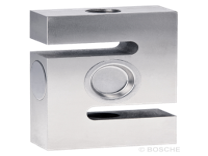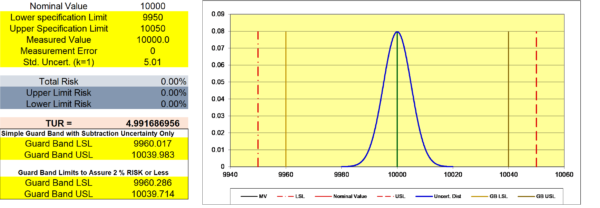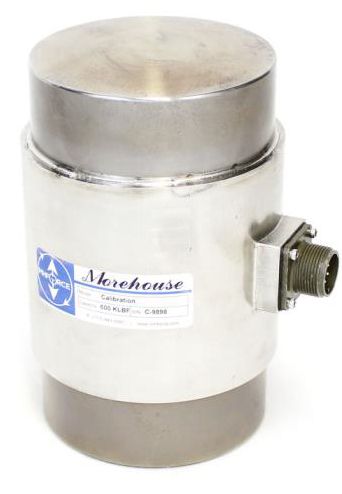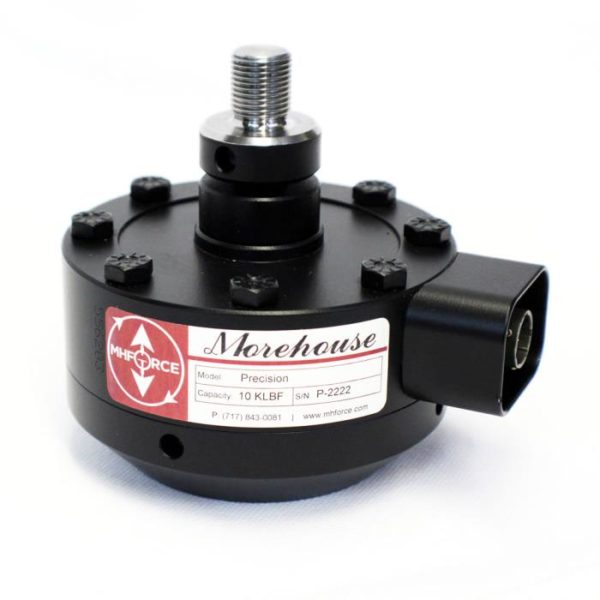The Top 3 Things to Consider When Purchasing a Load Cell
Usefulness may be the one word we often neglect to consider when purchasing force-measuring equipment or any test equipment. Let's think about that for a bit and let it sink in. Most people I have run across seem to be concerned with price, a manufacturer's specification sheet, and maybe the physical size of the force-measuring device. However, when we discuss "usefulness," we start to think about what matters most. Is the equipment able to accomplish what my organization or I need it to do?

Figure 1 S-beam or S-type load cell
Purchasing a Load Cell Price
Out of the three main concerns; price, physical size, and manufacturer's specification, none of these give the full picture of if the device is useful or not. Price is important when budgeting and making any decision. I think many of us want our expectations met when we buy something; however, that does not always happen. What does happen is that lower prices tend to mean mass production, and mass production tends to raise some quality concerns.
That is not to say the lower-priced equipment is bad; it's just to say that it is more of a buyer beware depending on the application. Now there are several low-priced solutions that, when properly tested, accomplish what is needed or may be useful for the intended application. In my 20-plus years in force measurement, I have rarely encountered a bargain. Morehouse used to sell S-type load cells more frequently. That is until the time it took to test each load cell thoroughly outweighed the $295.00 price tag.
On bad lots, we ended up rejecting about 70 % of all the S-type load cells we tested as they failed in rotation. On good lots, the rejection rate was about 25 %. To this day, we still have about 100 S-Type load cells that are okay for general testing applications where an accuracy of 0.25 % or better would be good enough. However, we find that just good enough still carries a lot of risks, and almost all our customers do not want the risks associated with equipment that may cause rework.

Figure 2 Acceptance limits of a 0.5 % tolerance with a device known to be within 0.25 %
Think about it this way, I have a device that is known to be within 0.25 %, and I want to make a measurement that is within 0.5 % if I take measurement uncertainty into account, which I definitely should do if I'm using a decision rule that requires accounting for measurement uncertainty, my window for passing a device with a tolerance of 0.5 % is low. Figure 2 above shows the acceptance limits of between 9975.679 lbf through 10024.321 when taking the measurement uncertainty into account.
It means I may have to adjust what I am testing as my device does not give me enough of a window to "pass" without adjustment. Then the customer has a potential failure that is caused by my equipment that was deemed just good enough. I would not call this equipment very useful if it costs more of my or the company's time to frequently make adjustments. Furthermore, we have simplified the equation as a device that is accurate to 0.25 % at the time of calibration often carries a much higher uncertainty when stability, repeatability, reproducibility, environmental conditions, resolution, and other CMC uncertainty parameters are not considered in these examples.

Figure 3 Acceptance limits of a 0.5 % tolerance with a device known to be within 0.1 %
What if we change the reference equipment to a better load cell and meter combination that could achieve a realistic 0.1 % tolerance? Figure 3 shows that acceptance limits will increase if the reference standard uncertainty decreases. In this scenario, the end-user can "pass" more instruments as the acceptance limits with less than 2 % risk increase from 9960.286 to 10,039.714

Purchasing a Load Cell - Physical Size
The physical size is important as you need to know if the instrument will fit if the technicians can carry it, or if other devices may be needed to help set the equipment up. If I am purchasing a load cell for my field technicians to go out and calibrate concrete machines or other machines, is the person going to be able to carry an 80 lb load cell? It is a consideration of what may or may not be useful. If my technician cannot carry the load cell, I doubt it is very useful. Morehouse developed a 600,000 lbf (can go to 3000 kN) compression-only type load cell that weighs less than 30 lbs because of this very issue.
Sometimes it's a trade-off as the smaller load cell may not perform as well as needed. The above load cell is usually much better than 0.02 % of full scale. That translates to about 0.2 % at 60,000 compared with a shear web type load cell that can achieve 0.005 % of full scale and 0.05 %; however, the shear web cell will weigh about 300 lbs at this capacity. A weight that only a few people I have watched on a late-night strongman competition could maneuver.
Purchasing a Load Cell - Manufacturer's Specification
The third and probably the most asked-for item is the specification sheet. The specification sheet may tell you how well the cell repeats, how it reacts to certain temperature conditions, how linear the device is, and its side-load sensitivity, which is very useful, however, I have yet to see a specification sheet talk about interactions with various adapters. I have not seen a specification sheet saying the results are only achieved if this load cell is loaded through the shoulder in compression with a material hardness of X in a machine that is plumb, level, rigid, square, and has low torsion.
I see very few that tell you how reproducible the load cell is. Reproducibility spec is very dependent on the equipment it is being used with. If the equipment has bending, misalignment, and torsion, the load cell is not going to perform as expected. Therefore, almost every specification sheet does not tell you what you need to know. Morehouse puts a note in our literature about what can be achieved, but that makes assumptions that the end-user may be using our force equipment and machines with our recommended adapters. If you have not read my paper on adapters, I encourage you to do so as the wrong adapters can turn a device known to be within 0.01 % into a device with 0.3 % error, as we have seen with top blocks of different hardness. That paper that won the best paper award can be found here.

Figure 6 Morehouse Precision Shear Web Cell
Purchasing a Load Cell - Conclusion
In this industry, I have not seen something comparable to Consumer Reports or websites that truly rank load cells and other force-measuring equipment. I would love to see reviews for an S-beam type load cell that says if you load it through the top and bottom threads and get the centering perfect, the output will be very symmetrical and repeatable, however, if you are out of alignment by 0.1 cm, or have a side load of 0.1 degrees, that the error will be close to 1 %. Does that 1 % potential error make the device fit for use when the price is good, the size is great, and the spec sheet looks okay? It all depends on what the end goal is.
If the expectation is to calibrate tensile machines to ASTM E4 or ISO 7500, then the 1 % error is not going to make the load cell very useful, will it? If the end goal is to verify a press has a stamping force known to be within 5 %, then maybe it could be quite useful. Figure 6 above is an example of a load cell that will tolerate some misalignment and still produce confident measurements as slight misalignment will increase the error by less than 0.003 %. It would be the recommended choice for ASTM E74 & E4, and ISO 376 & 7500 applications. In the end, it comes down to forming a relationship with a company you can trust. A company that listens to your problems and finds solutions to your measurement needs. A company that provides the right equipment and the right service so that you can have force-measuring equipment that is indeed "useful."
If you enjoyed this article, check out our LinkedIn and YouTube channel for more helpful posts and videos.
I take great pride in our knowledgeable team at Morehouse, who will work with you to find the right solution. We have now been in business for over a century and have a focus on being the most recognized name in the force business. That vision comes from educating our customers on what matters most and having the right discussions. Morehouse will not commit to providing a system if we cannot meet your expectations.
Everything we do, we believe in changing how people think about force and torque calibration. We challenge the "just calibrate it" mentality by educating our customers on what matters and what causes significant errors, and focus on reducing them.
Morehouse makes simple-to-use calibration products. We build awesome force equipment that is plumb, level, square, rigid, as well as provide unparalleled calibration service with less than two-week lead times.
Contact us at 717-843-0081 to speak to a live person or email info@mhforce.com for more information.
#Purchasing a load cell


